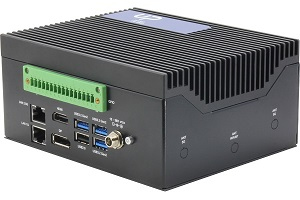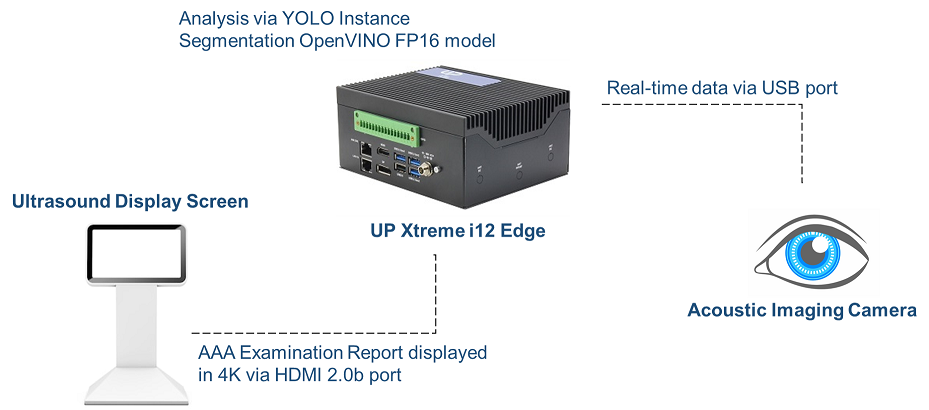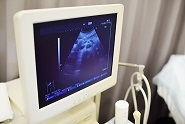HackForHealth – AI-Accelerated Aortic Aneurysm Detection

Having covered the first of the teams to reach the finals of the Intel DevCup in part 1 of this two-part Intel® DevCup special, this article will provide insight into the application developed by HackForHealth, a team formed by Rongguang Technology and Kaohsiung Chang Gung Memorial Hospital.
HackForHealth was the second group to make use of the UP Xtreme i12 Edge in the DevCup, reaching the finals. HackForHealth’s application objective was both admirable and ambitious, attempting to use AI to make abdominal aortic aneurysm (AAA) screening more accessible in rural communities that lack experienced medical personnel. The implication of this would be that with the assistance of AI detection, preliminary AAA screening would be made more accurate and accessible to rural communities. Ultimately, the achievement of this goal would result in a greater number of at-risk patients receiving early detection and intervention for a potentially fatal medical condition.
Application Architecture
Taking advantage of the UP Xtreme i12 Edge’s 12th Generation Intel® Core™ i7-1270PE processor, and the device’s support for the Intel® Distribution of OpenVINO™ Toolkit, HackForHealth developed an inferencing model to identify the position and width of the patient’s aorta, along with detecting the presence of legions within ultrasound images.
With up to 2.81 times the GPU image classification inferencing performance of the previous generation, the UP Xtreme i12 Edge was capable of differentiating between abdominal ultrasounds showing normal aorta imaging and those with legions. Further to this, the model also provided guidance in identifying the location of the patient’s aorta, making it easier for less experienced medical personnel to locate it.
Using a real-time YOLO Instance Segmentation OpenVINO FP16 model running on OpenVINO Runtime, the application required a substantial volume of data for inference training purposes, which corresponded to the model’s accuracy in discerning between imaging showing healthy aortic function and those featuring lesions or other issues.
Real-time data fed from the acoustic imaging camera to the UP Xtreme i12 Edge via its USB port was displayed in 4K using Intel® Iris® Xe graphics. For this, the system’s HDMI 2.0b port acted as a conduit, providing clear imaging of the patient’s ultrasound for analysis. The application would then provide an immediate AAA Examination Report detailing the image acquisition quality, the aorta’s maximal and average width, and recommendations based on its findings. This helped imaging professionals determine whether the patient was at risk of an abdominal aortic aneurism, requiring further investigation.

Impact
While HackForHealth made it to the finals of the competition, the issue of data acquisition produced a barrier to the successful implementation of the application. As has been seen with the exponential growth of both the use and precision of image detection applications deployed in areas such as industrial automation and smart city, using AI inferencing for image recognition can be incredibly precise. However, the sensitive nature of the data required to build a model to detect medical issues prevents developers from obtaining sufficient training data, meaning the time and resources needed to do so are far greater.

Consequently, the development of medical imaging applications is incredibly difficult without access to a substantial volume of patient data to build the application’s inferencing model. As such, it is important to commend the ingenuity of HackForHealth’s application, and highlight how much was achieved in a matter of months. While the application did not receive an award, it shows that with funding and the cooperation of regulatory authorities, AI could have a paradigm-shifting impact on rural public health outcomes. The widespread implementation of AI-assisted preventative medical screening has the potential to improve the lives of millions of people that have limited access to healthcare due to a shortage of qualified medical personnel, equipment, and public funding in rural regions, which is demonstrated by HackForHealth’s successful proof of concept.
